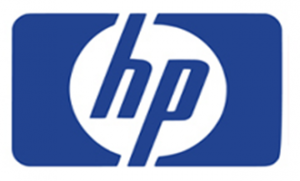“It’s just how we do things around here.”
I still recall the conversation between the Hewlett-Packard worker and the Tellabs manufacturing VP. It was 1993, and we were on trip to HP’s Loveland Manufacturing Center, a key production facility in northern Colorado. Back then I sold HP test equipment in Illinois, and we were hosting a group of Tellabs executives on a benchmarking visit. My sales colleagues and I were building relationships and sharing manufacturing “best practices” with the hopes it would motivate them to buy more HP gear.
We were touring the production area and one of my customers pulled aside a passing worker, asking him about some charts hanging on the wall. The guy stopped for a few minutes and pointed to the diagrams, describing what each meant. “This one shows the count of defects by type. It looks like they were having a problem with the solder application. And over here, it looks like the adjustment dropped the defect rate by about 30%.”
A bulletin board labeled “PDCA Storyboard” prompted the interaction. A management presentation earlier in the day talked about the division’s Total Quality Management journey. HP used “Plan-Do-Check-Act” as its corporate improvement method, and the PDCA Storyboard showed the step-by-step progression. The presenter had made the bold statement that the quality practice was everywhere. It had become entrenched in the division’s operating system.
The Tellabs VP smiled and said, “So you’re saying you don’t work here but you can tell what this operation is doing?”
“Yeah. I’m on one of these quality teams in my area. We use PDCA to increase our yields, too.”
“Come on. You’re not just a ‘plant’ walking by, an expert trying to impress us?” the executive chided him.
His response was working-man authentic. “No,” he said, shrugging. “It’s just how we do things around here.”
I could tell my customer was satisfied. He shook hands with the worker and thanked him. Without saying a word, I knew what he was thinking: It’s true. HP really is this good.
As a company HP was well respected, but it wasn’t because it was the most inventive. It didn’t come up with SPC or kanban or anything else the Tellabs executive hadn’t heard of. It wasn’t because HP only used the most advanced technology. The tour showcased some shiny, new equipment, but most was conventional and well used. It wasn’t because the company didn’t make mistakes. Over the years, the exec had dealt with the occasional HP hiccup. But where Tellabs and others would talk about fundamental change, HP would do it. And do it well.
HP had great people and great discipline. The company had a knack for studying something interesting, trying it on a small scale, refining it, rolling it out consistently, and making it all natural. Author Jim Collins calls this empirical creativity matched with fanatic discipline; direct engagement and practical experimentation followed up with utterly relentless execution in accordance with consistent aims, performance standards, and methods.1 HP’s behavior, like other dynasty companies Collins studied, allowed it to dominate the test equipment industry for nearly seventy years.
Things have changed since 1993. The HP division became part of the Agilent Technologies spin-off, the manufacturing unit was offshored, and the HP brand has lost some of its luster since the time of “Bill and Dave.” Tellabs also changed. After heady growth, the company suffered from the telecom bubble burst; painful cutbacks, management changes, and eventual renewal as a networking products company.
I’ve changed, too. A career in sales led to marketing and operations, eventually leaving HP to start three companies and work for two more. Sparked by my time at HP, I spent many years exploring why some organizations performed consistently better than others. I learned and applied lessons in my own companies and others through the Baldrige program and the occasional consulting gig.
I’m convinced high performance boils down to simple, disciplined management systems that make people, planning, execution, and learning all more effective. It’s true for organizations large and small, no matter the sector. But success always depends on great leadership and the tenacity to see it through. When excellence becomes a matter of organizational habit, long-term success is assured.
And that’s what reminded me lately of the wisdom and discipline of a great company. Years ago they made it all happen, captured in one simple remark:
“It’s just how we do things around here.”
Footnote:
1. Collins, J. and Hansen, M. Great by Choice: Uncertainty, Chaos, and Luck–Why Some Thrive Despite Them All. Harper Business, 2011. ISBN 0062120999.

